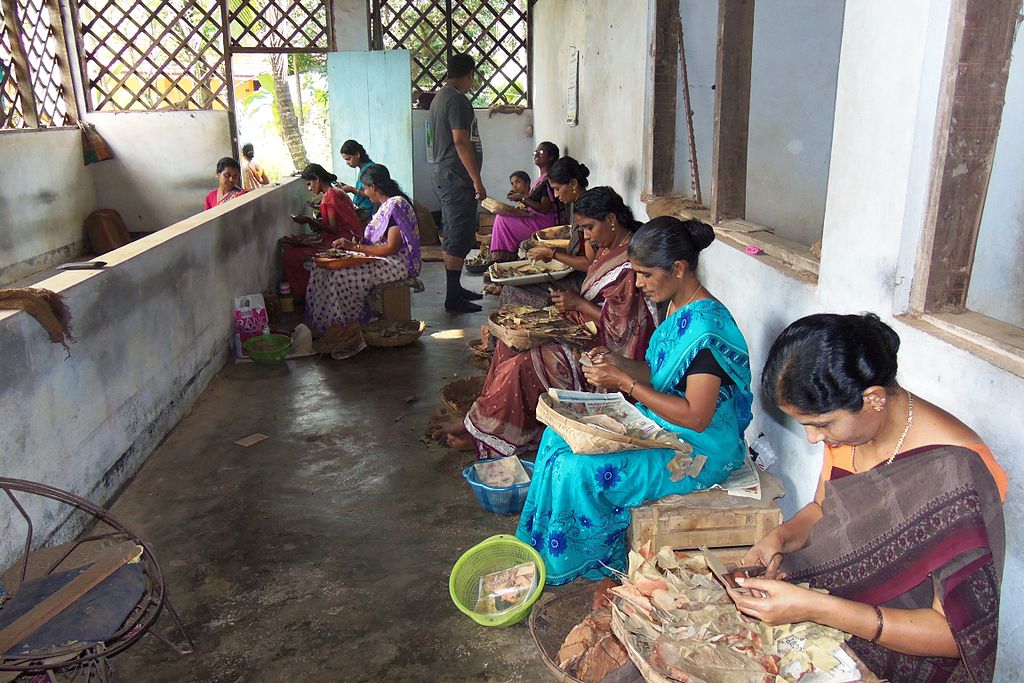While about 96 per cent (42,76,124) of the total beedi workers (44,60,076) are home-based, only four per cent (1,83,952) work in factories, reveals a new study adding that about 80 per cent of home-based beedi workers live in rural areas, and 20 per cent in urban areas.
The number of beedi workers decreased from 4.47 million in 1993-94 to 4.27 million in February 1997 but increased to about 4.8 million in 2018. This shows that there is an overall increase of beedi workers by 1.5-2.1 million during 1993 – 2018, it adds.
These findings are brought by a recent study, undertaken by a group of researchers of AF Development Care, a New Delhi-based research consulting group.
The report title “Knowledge Gap in Existing Research on India’s Women Beedi Rollers & Alternative Livelihood Options: A Systematic Review for Promoting Evidence-Informed Policy and Prioritizing Future Research” analysed policies, existing programmes and related initiatives by different institutions on the alternative livelihood options for women beedi rollers in India to identify knowledge and policy gaps through a critical review of the existing literature of last 20 years.

It says that there are noticeable discrepancies observed in reporting of the beedi worker data by government bodies. For example, while the number of registered workers reported in July 2019 was 5.59 million, it was reported as 4.98 million in December 2019.
The research study says that the top five Labour Welfare Organization (LWO) regions in terms of the women beedi workers are Kolkata (12, 95, 000), followed by Jabalpur (4, 22,000), Hyderabad (3, 72,000), Allahabad (3, 60,000) and Bangalore (2, 13,000).
However, the ratio of women beedi workers is the highest in the southern LWO regions — highest in Kannur (94 percent) and Tirunelveli (93 percent), in the southern states of Kerala and Tamil Nadu, respectively.
While West Bengal, Andhra Pradesh and Tamil Nadu have the highest number of total beedi workers, West Bengal, Andhra Pradesh, Tamil Nadu and Karnataka have the highest number of women beedi workers.
Women comprise 84 per cent (West Bengal), 95 per cent (Andhra Pradesh), 84 per cent (Tamil Nadu) and 91 per cent (Karnataka) of the total beedi workers in these states.
While the number of workers has increased in some states it has declined significantly in the others, especially in the southern states of Andhra Pradesh, Karnataka and Tamil Nadu. The highest decrease is reported in Tamil Nadu (541,000) followed by Andhra Pradesh / Telangana (187,000) and Karnataka (116,500).
Dr. Bibek Debroy, Chairman, and Prime Minister’s Economic Advisory Council of India, while reviewing the report has written in the foreword: “As most people know, Union Labour Ministry has started an exercise of unifying all Union-level labour statutes into four codes. For instance, the first of these three statutes will be subsumed in the code on occupational safety and health, while the last two get subsumed in the code on social security and welfare. There are two reasons why I am mentioning this. First, labour legislation has segmented the labour market into the organized and the unorganized, making the first rigid, but offering scant protection to the second. Even when legislation exists, in an informal economy, it cannot be enforced. For instance, rights cannot be enforced (irrespective of whether the sector is technically defined as organized or unorganized) in the absence of contracts. One of the findings in this report reinforces the impression that often, workers don’t have enforceable contracts. Second, mere enactment of legislation is no solution.”

The Principal Investigator of this research report, Sachi Satapathy said: “There are significant discrepancies found in data on beedi workers reported by the government of India over the period. Inconsistent and unreliable data lead to aggravated vulnerability and exploitation of beedi workers. Reliable state-level data are not available. Annual Survey of Industries (ASI) data covers only factory-based workers (excluding ~96 per cent of the beedi workers who are home-based). Secondly, cess collected as part of the Beedi Workers Welfare Cess Act, 1976 was the major (only) source for financing beedi workers’ welfare programmes. After the implementation of GST in 2017-18, no budget has been allocated exclusively for beedi workers. Welfare spending for beedi workers (without having any dedicated fund) is severely impacted on the post-GST period.”
Review of data from different ministries shows that government initiatives on skill development of women beedi rollers have not been very effective. For example, in 2019, only 1,025 of the total 2,223 women beedi rollers (out of nearly five million in the country) trained under the initiative, shifted to alternative jobs. Lack of evidence on the change of conditions in their post-beedi rolling jobs could be the reason behind such low-key intervention, says Satapathy.
The other researchers engaged in this research works include Dr. Gagan Bihari Sahoo, Associate Professor, and Centre for Social Studies, Surat, Gujarat, Dr. Jagannathan Mallick, Fellow, State Bank of India Institute of Leadership, Kolkata among others.









